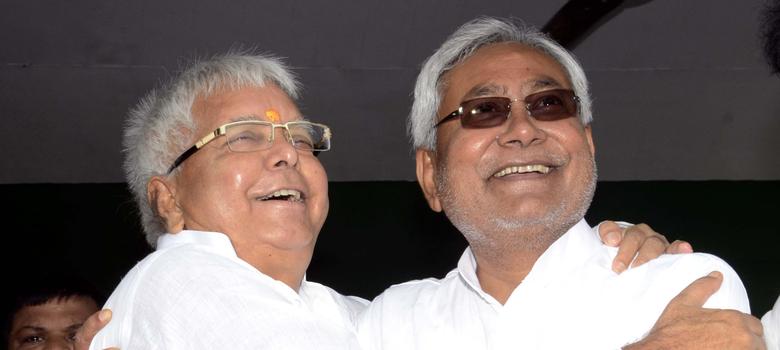The leaders of six different parties had authorised Samajwadi Party president Mulayam Singh Yadav to work out the “modalities” for them to merge into a new, combined party, which – based on the original name that was being proposed when the merger first came up – we're labeling the Samajwadi Janata Dal for now.
That technically translates as the Socialist People’s Party, although a break-up of those words has more to do with the new outfit’s antecedents rather than any single ideology.
Who are they?
This proposed Samajwadi Janata Dal brings together six parties, with varying footprints across the country. They are the Uttar Pradesh-based Samajwadi Party, the Bihar-focused Rashtriya Janata Dal, Janata Dal (United) and Rashtriya Samajwadi Party, Karnataka’s Janata Dal (Secular) and the Haryana-based Indian National Lok Dal.
This grouping features a number of political bigwigs, including one former prime minister and three former chief ministers. But all of them appear to be on the backfoot in one way or another in their respective states, mostly reeling from the onslaught of the Bharatiya Janata Party on the back of Modi’s immense popularity.
What brings them together?
Other than the need to take on Modi, the parties can actually claim common ground thanks to their heritage. All of the parties are actually offshoots of the Janata Party, itself a grouping that came together in an attempt to defeat another incredibly powerful prime minister, Indira Gandhi, after the Emergency.
A decade after the Janata Party defeated Indira Gandhi, many of the factions of this parivar came together to form the Janata Dal which also sent a prime minister to New Delhi. Although in both cases the foundational ideology was anti-Congressism, the leaders also espoused welfare-socialism based on the ideas of Ram Manohar Lohia.
Who was left out?
The most immediate outlier is the Rashtriya Lok Dal, which also has ties to the old Janata Party. Reports however suggested that its leader, Ajit Singh, was uncomfortable joining hands with the INLD, because both parties see themselves primarily as representatives of Jats in the Haryana-Western Uttar Pradesh belt.
Then there’s also the Biju Janata Dal, another offshoot of the erstwhile Janata Dal, which is currently in power in Odisha. The party has said it will wait and watch while the new Janata Parivar outfit develops before deciding whether to be a part of the front.
What presence do they have?
Two of the parties in the grouping are currently in power in their states – Samajwadi Party in Uttar Pradesh and the Janata Dal (United) in Bihar. But both of these parties also took huge losses in the general elections in 2014, conceding a huge number of seats to the now-ruling BJP.

In the Rajya Sabha, however, the parties do have a considerable presence, enough that they can stand in the way of the government’s plans to pass crucial pieces of legislation. The parties had, in fact, already decided that they would be working together during this winter session of Parliament in taking on the BJP on legislation.

Their potential to haul in votes when working together is also crucial. Even combined, the Samajwadi Janata Party would only have picked up about 7% of all the votes nation-wide during the General Elections, based on a crude addition of their vote-shares.
But if you eliminate cross-voting patterns, where they might have been working at cross-purposes during the Lok Sabha elections, and consider the fact that the Left parties and even the Congress are likely to work together with this outfit (at least as things stand now), they would have put up a reasonable fight.

This is again, on the vote share front, and it doesn’t even feature the Bahujan Samaj Party, which got the third-most votes in the country but didn’t win a single seat or the Trinamool Congress, which did extremely well during the Lok Sabha elections but now appears concerned enough about the BJP that it might want to ally with a larger anti-Modi front.
What about in Bihar?
Bihar is going to the polls later this year and so is expected to be the first real test of this Janata Parivar merger party. In fact, it was the success of them working together, along with the Congress, to win a by-poll in Bihar last year that gave credence to the idea that a merger might end up working in everyone's favour. The added benefit is that the Congress, although not a major player in the state, can move the needle and so if it makes common cause with the Samajwadi Janata Dal, the BJP might have a really tough time.

Results in the previous Assembly elections in the state suggest things would definitely swing in favour of the merged party, even if they didn't join up with the Congress. But five years is a long time and the BJP has made a lot of strides since then.

Which is why the break-up of numbers during last year's Lok Sabha elections is equally interesting. With the Congress also attached to the Janata Parivar formation, the BJP actually ends up coming short, at least in terms of vote share. This suggests that if the parties are able to work together, a fight that was expected to easily go the BJP's way might now end up being much closer than before.










